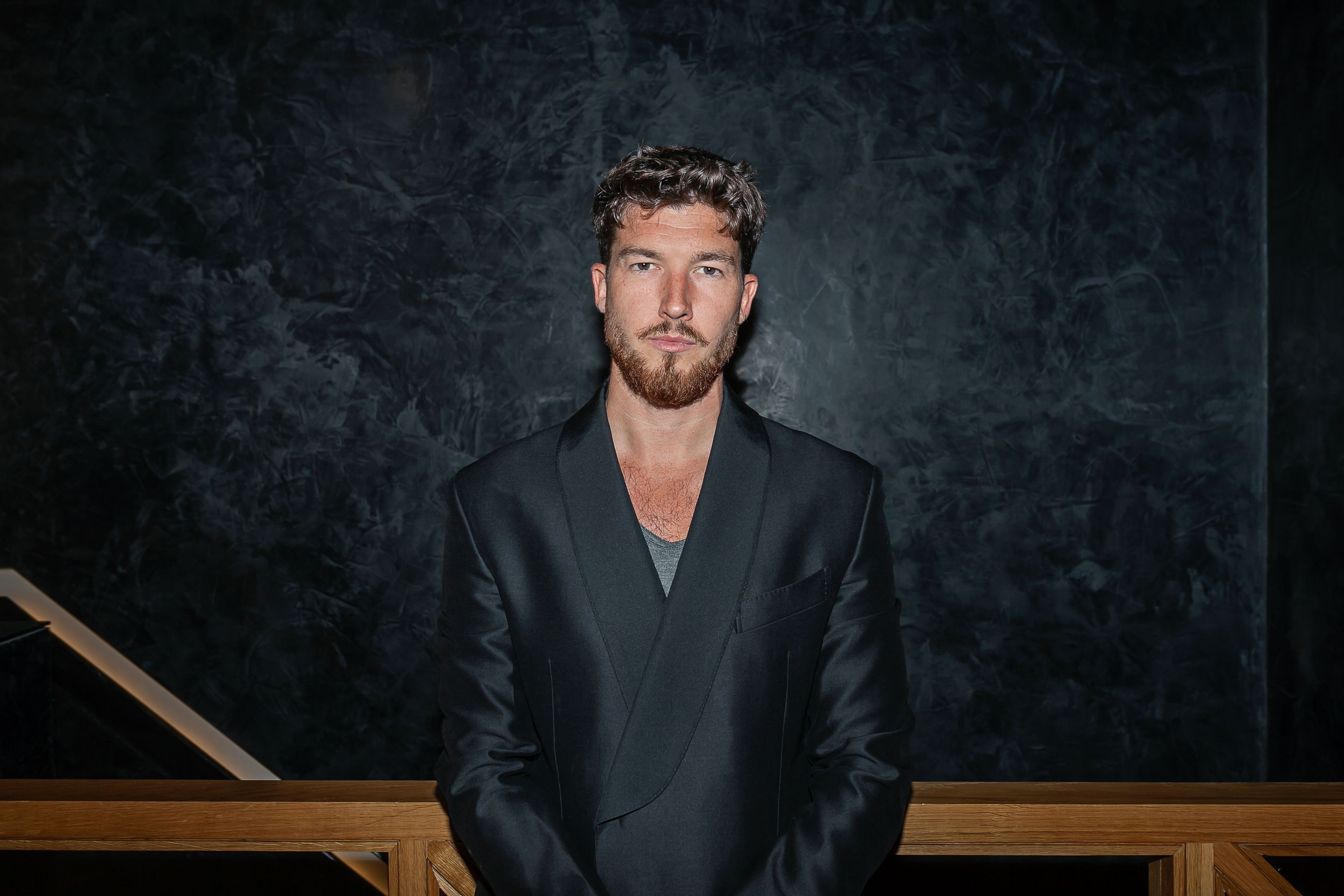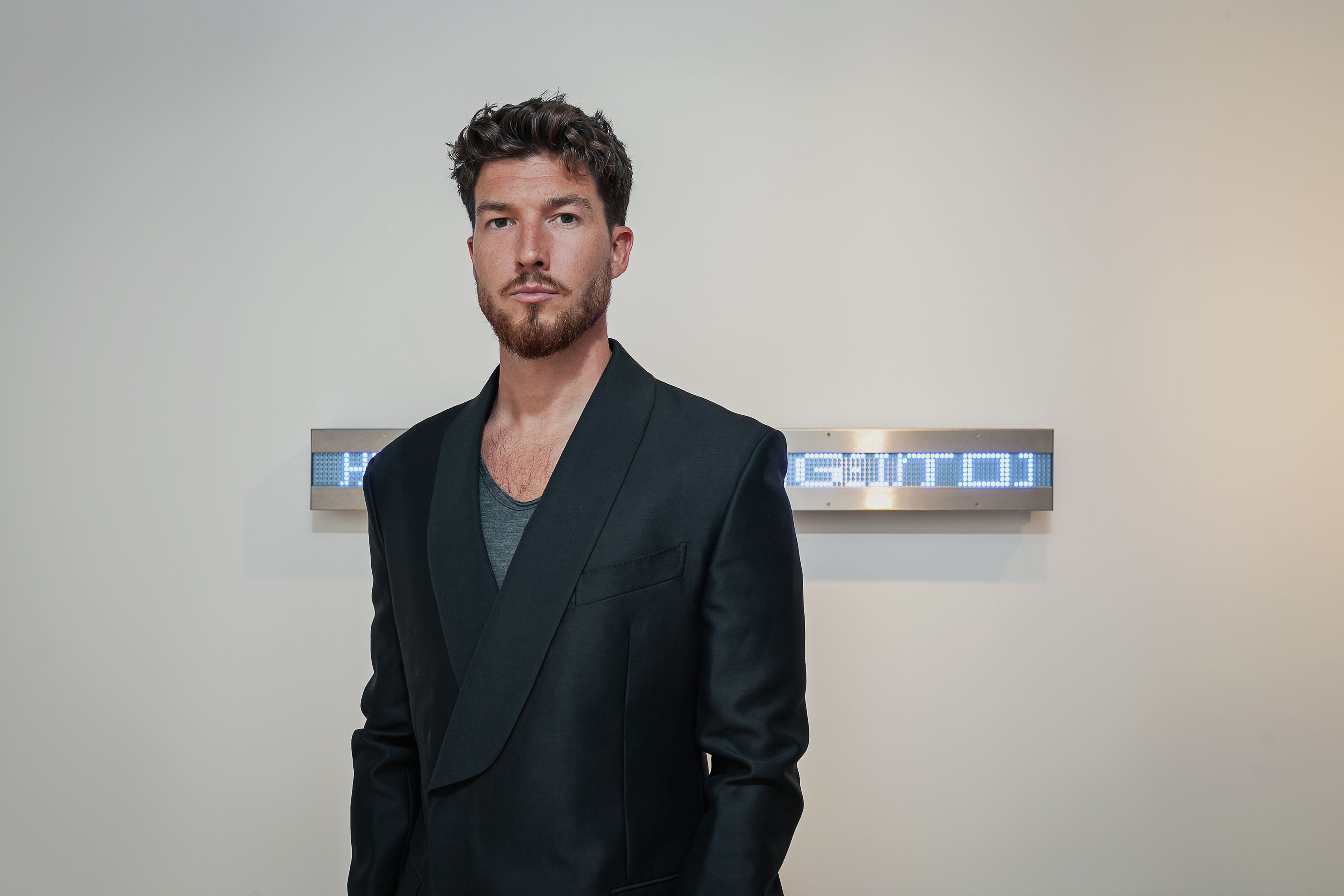
UNIT London has carved a reputation as one of the most challenging and forward-thinking galleries on the global art scene, launching the careers of a vast array of artists from outside the mainstream gallery system, and challenging the art establishment on every conceivable level. Since opening its doors at its now permanent home on Hanover Square in 2018, it has gone from strength-to-strength, producing uncompromising shows that champion powerful and distinctive artists shining light on the cultural issues that define the zeitgeist. The two shows currently installed are no exception, with the group show Sensitive Content giving voice to artists whose work has been widely censored, such as Pussy Riot and Mary Beard, and In Our Code championing the players at the cutting-edge of generative art, who are pioneering work that poses radical questions about authorship, value and consensus. Here the co-director of the gallery Joe Kennedy talks to Culture Collective about his commitment to bridging the gap between the physical and virtual spheres of modern experience with the gallery's latest platform WEB3, which is devoted to supporting artists working with ascendant technologies, and tells us why the democratisation of the art market might just help better shape its future.
How would you describe the ethos of UNIT gallery?
Our goal with the gallery has always been to create a channel, and a platform for artists to be able to express themselves and tell their stories to a much wider audience. In choosing the work, the question we always ask ourselves is whether the work resonates with us? Is it interesting? Is there a unique message there? And if there is, then the next big question is can we platform it? When we started the gallery, and started to get a couple of thousand people following us, it was actually much more exciting to me than making a sale, because I felt like, wow, okay, we're actually giving these artists eyeballs – people are engaging and discovering their work.

How did Sensitive Content come together?
We were just finding that we were having the same kinds of conversations with so many of our artists, all of whom kept getting removed or blocked on social media platforms because it's either deemed to be sexually explicit or to contain some political message. And, of course, we’re seeing that more and more in the modern day, where we're constantly interfacing with the world through algorithms and media platforms. So. there is a really interesting conversation to be had about how these algorithms are created, and who determines the parameters of what is morally or ethically correct or incorrect. And I think exploring this idea of cultural censorship just really resonates with people right now. I mean, we had something like 5,000 people turn up for the opening. It was a 45-minute wait just to get inside. And that is incredible.
Why are you so focused upon digital and generative art?
I think over the next decade, you are going to see digital artists becoming the foremost artists in the contemporary art market, because they're very representative of the culture that we live in and the way that the world is moving. It’s a fact of life that we're interfacing more and more with digital screens, and coding as a profession has exploded – until now data coding and programming has always been very goal oriented, but it’s fast become a tool of expression, and artists are essentially now collaborating with code to produce a visual output. Generative art is a form that a lot of people don't understand yet, but it all very simply comes down to input and output. The artist will write a program that allows for randomness to be introduced in specific ways and the machine then generates an output, and it's like a constant generative process of that happening. It's such a fast growing space, and it’s kind of a new thing for the work to be accepted and seen as art. The thing about digital art that's been really interesting in recent years is that it is now able to be sold, so mainstream galleries and dealers are suddenly interested – therefore you have digital art represented by galleries, and being sold to museums. Digital artists are now starring to permeate that whole ecosystem.

Is that what made you want to launch the WEB3 platform?
One of the reasons we jumped straight into making an NFT-focused platform, and being the first gallery to launch it is because it just creates a much fairer system and I think that's something that the art world very much needs. The NFT space is democratizing art massively because it's opened the door to the art world to a whole community of people who have never been invited in, and it makes the market much more equitable for artists – creating an immutable paper trail and a community of people who own your art through tokens. The lack of transparency in the industry is one of the biggest issues in art, and it’s actually why we started the gallery in the first place, to forward the idea of transparency and accessibility.

Do you believe the NFT movement can genuinely change that?
Yes. It is an infrastructure that solves so many of the issues with the art world, which is precisely the reason it’s been so fiercely contested by the establishment, until now. But then that's why I think NFTs are so exciting, because it is a brand new infrastructure that will become more and more widely adopted. The art world simply can't hold onto these rigid and closed ways of working, which basically amounts to a lack of transparency and opacity in the way they go about business. Ultimately, what the next generation coming through are used to, and what they expect from brands and organisations, is transparency, accessibility and advocacy for change. I think that's what people really care about, and I think that attitude has been key to our success. It is why the NFT space makes so much sense for us. It almost felt like a duty to start a platform, because as soon as I started learning about it properly, I was like, yes, a hundred per cent. I genuinely believe it's the future.
Sensitive Content and In Our Code exhibit at UNIT London until October 16
Images (top to bottom): portrait by Marcus Peel; Sensitive Content install shot by Marcus Peel; portrait by Marcus Peel; Sensitive Content install shot by Marcus Peel